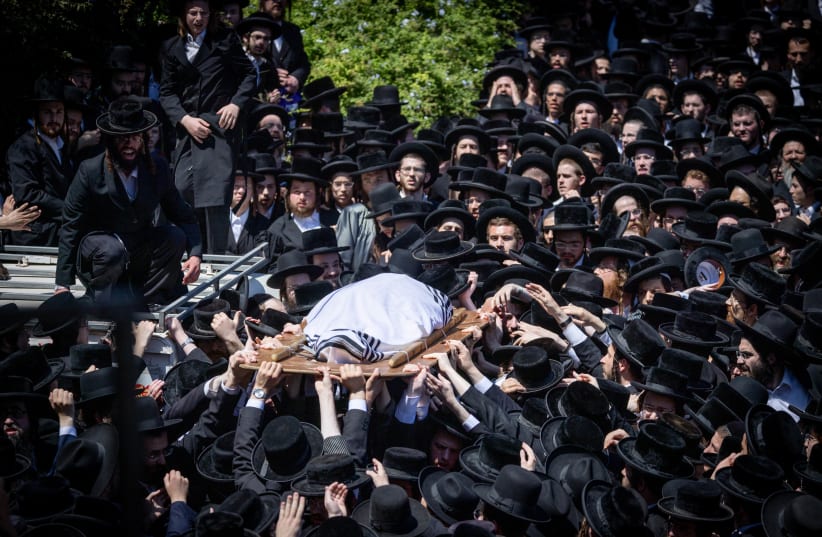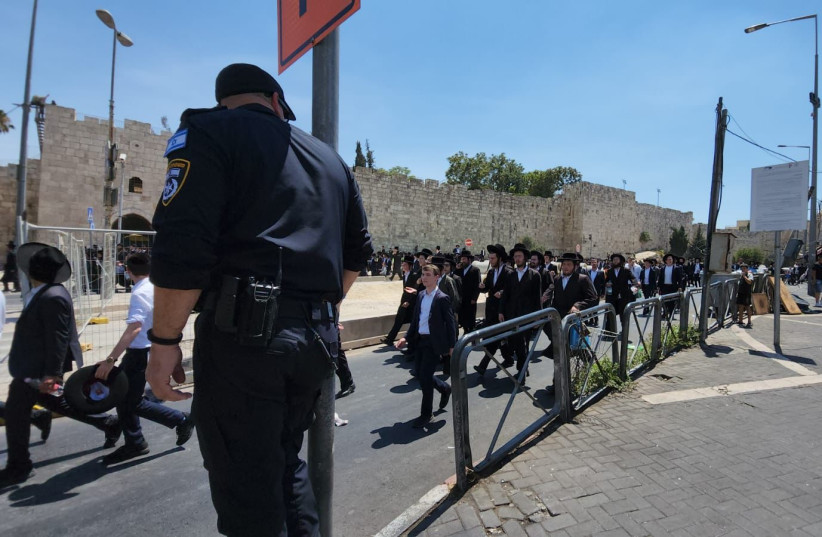Chief rabbi of the Eida Haredit (ultra-Orthodox community), Rabbi Yitzhak Tuvia Weiss was buried at the Mount of Olives cemetery on Sunday afternoon.
Weiss, 95, passed away at Hadassah Medical Center in Jerusalem’s Ein Kerem neighborhood after contracting an infection last month. He was hospitalized then and his condition worsened over the last few days.
Who was Rabbi Weiss?
Weiss was born in Pezinok, Czechoslovakia, (now Slovakia) to a wood salesman.
In 1939, Weiss was saved from the Holocaust in the Kindertransport organized by Nicholas Winton. He later immigrated to London alone, leaving his family behind.
He spent much of his adult life in London and Antwerp, where he was appointed a member of the beit din (Jewish court).
19 years ago, Weiss immigrated to Israel and was appointed Chief Rabbi of the Haredi Council of Jerusalem after the death of his predecessor, Rabbi Israel Moshe Dushinsky. He later headed the Jerusalem yeshiva Par HaTorah.
As a leader within extremist ultra-Orthodox anti-Zionist factions, Weiss was known for his uncompromising views upholding the sanctity of the Shabbat and opposing the conscription of ultra-Orthodox men to the IDF, for promoting the prevention of grave desecration and for his tolerance and respect for bereaved families when he prevented protests during Yom HaZikaron (Memorial Day).
Roadblocks in Jerusalem
Police officers under the command of Jerusalem District Commander Doron Turgeman were responsible for security at the funeral procession, maintaining public order and directing the movement of mourners, according to a police announcement.
The affected roads have all been reopened to traffic.
Who are the Eida Haredit?
Formed in Jerusalem in 1919 by Rabbi Yosef Haim Sonnenfeld, the sect includes various hassidim forming the “Haredi Council of Jerusalem.” They number about 40,000 persons, most of whom live inside the Mea She’arim and Batei Ungarin neighborhoods, and now a growing number of them in Beit Shemesh.
The Eida Haredit is led by an independent rabbinical court, and chaired by two high bodies: the Ga’avad and the Ra’avad, respectively the leader of the rabbinical independent court and of the major yeshiva.
The community consists of smaller groups and communities: the hassidim of Satmar, Toldos Aharon, Toldos Avrohom Yitzchok, Dushinsky, Mishkenot Haroeim and Breslov, as well as the Pharisee congregation, Tiferet Jerusalem community and the Jerusalem People community.
The Eida is unique in its opposition to Zionism and any cooperation with the State of Israel and its institutions.
Peggy Cidor contributed to this report.

